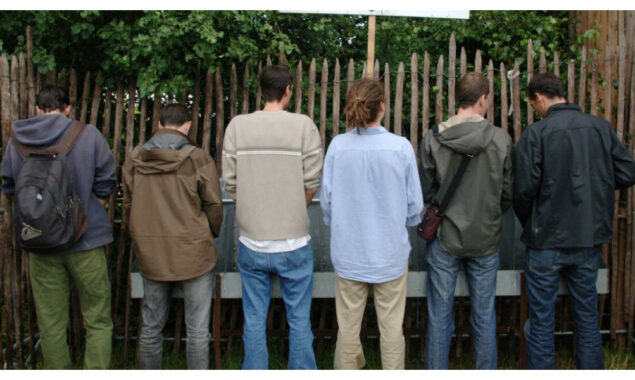
Can pee help feed the world?
“Go pee on the rhubarb!”
Engineer Fabien Esculier has never forgotten his grandmother’s unconventional approach to gardening — in reality, it has inspired his profession.
Human urine may seem like a crude way of fertilizing plant life within the generation of commercial agriculture, however as researchers search for ways to lessen reliance on chemical compounds and cut environmental pollution, some are growing increasingly more interested in the capability of pee.
Plants need nutrients — nitrogen, phosphorus, and potassium — and we ingest these through food, before “excreting them, mostly through urine”, said Esculier, who runs the OCAPI research program in France looking at food systems and human waste management.
This presents an opportunity, scientists think.
Fertilizers using synthetic nitrogen, in use for around a century, have helped drive up yields and boost agricultural production to feed a growing human population.
But when they are used in large quantities, they make their way into river systems and other waterways, causing choking blooms of algae that can kill fish and other aquatic life.
Meanwhile, emissions from this agricultural ammonia can combine with vehicle fumes to create dangerous air pollution, according to the United Nations.
Chemical fertilizers also create emissions of the potent greenhouse gas nitrous oxide, contributing to climate change.
But the pollution does not just come directly from the fields.
“Modern-day sanitation practices represent one of the primary sources of nutrient pollution,” said Julia Cavicchi, of the United States Rich Earth Institute, adding that urine is responsible for around 80 percent of the nitrogen found in wastewater and more than half of the phosphorus.
To replace chemical fertilizers, you would need many times the weight in treated urine, she said.
But she added: “Since the production of synthetic nitrogen is a significant source of greenhouse gases, and phosphorus is a limited and non-renewable resource, urine-diverting systems offer a long-term resilient model for human waste management and agricultural production.”
One 2020 study by UN researchers found that global wastewater has the theoretical potential to offset 13 percent of the world’s demand for nitrogen, phosphorus, and potassium in agriculture.
But pee diversion is easier said than done.
In the past, urban excrement was transported to agricultural fields to be used as fertilizer along with animal manure, before chemical alternatives began to displace them.
But now if you want to collect urine at the source, you need to rethink toilets and the sewage system itself.
A pilot project to do just that began in Sweden in the early 1990s in a selection of eco-villages.
Now there are projects in Switzerland, Germany, the US, South Africa, Ethiopia, India, Mexico and France.
“It takes a long time to introduce ecological innovations and especially an innovation such as urine separation which is very radical,” said Tove Larsen, a researcher at Switzerland’s Eawag aquatic research institute.
She said the early urine-diverting toilets were considered unsightly and impractical or raised concerns about unpleasant odors.
But she hopes a new model — developed by the Swiss company Laufen and Eawag — should solve these difficulties, with a design that funnels urine into a separate container.
Once the pee is collected it needs to be processed.
Urine is not normally a major carrier of the disease, so the World Health Organization recommends leaving it for a period of time, although it is also possible to pasteurize it.
Then there are various techniques for concentrating or even dehydrating the liquid, reducing its volume and the cost of transporting it to the fields.
Another challenge is overcoming public squeamishness.
“This subject touches on the intimate,” said Ghislain Mercier, of the publicly-owned planning authority Paris et Metropole Amenagement.
It is developing an eco-district in the French capital with shops and 600 housing units, which will use urine collection to fertilize green spaces in the city.
He sees significant potential in large buildings like offices, as well as houses not connected to mains drainage.
Even restaurants. Also in Paris is the 211 restaurant, equipped with waterless toilets that collect urine.
“We have had quite positive feedback,” said owner Fabien Gandossi.
“People are a little surprised, but they see little difference compared to a traditional system.”
But are people ready to go to the next level and eat urine-fertilized foods?
One study on the subject highlighted found differences from country to country. The acceptance rate is very high in China, France, and Uganda for example, but low in Portugal and Jordan.
Prices of synthetic fertilizers are currently soaring because of shortages caused by Russia’s invasion of Ukraine, which has also spurred countries to consider shoring up their food security.
That could be an opportunity to help “make the subject more visible”, said Mercier.
Marine Legrand, an anthropologist working with Esculier at the OCAPI network, said that there are still “obstacles to overcome”.
But she believes that water shortages and elevated awareness of the toll of pollutants will help alternate minds.
“We are beginning to understand how precious water is,” she told AFP.
“So it becomes unacceptable to defecate in it.”
Read More News On
Catch all the International News, Breaking News Event and Latest News Updates on The BOL News
Download The BOL News App to get the Daily News Update & Follow us on Google News.




